The beautiful Sansui AU-919 integrated amplifier is a technical tour de force and an absolute stunner. Read on to find out more about this legendary model.
Welcome to another of my COVID-19 series and I hope everyone is keeping well. I work on a tonne of Sansui gear and always enjoy it. It’s well-engineered, well-made, great-sounding equipment, a pleasure to service. Sansui injected their unique design aesthetic and DNA into their products, but really stepped up their game in the mid to late ’70s, releasing products stellar in their vision and execution. The AU-919 is one of these products.
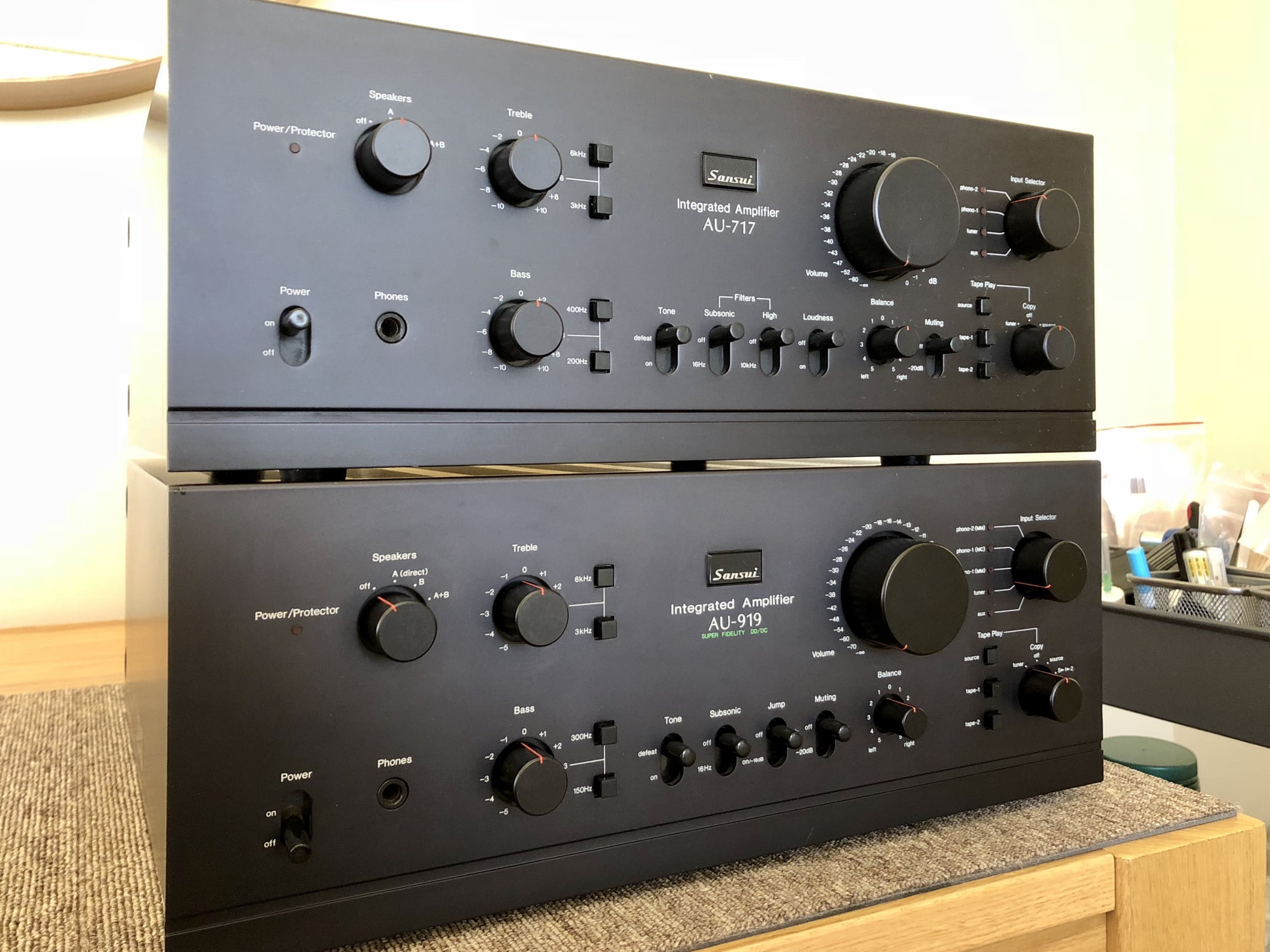
The AU-919 is part of an elite group of integrated amplifiers we might call ‘the greats’. Other Sansui contenders include the incredible AU-20000, a restoration article coming soon and the grand master, the AU-X1, one of which is here for overhaul and pictured below. The legendary AU-717 also deserves an honourable mention.
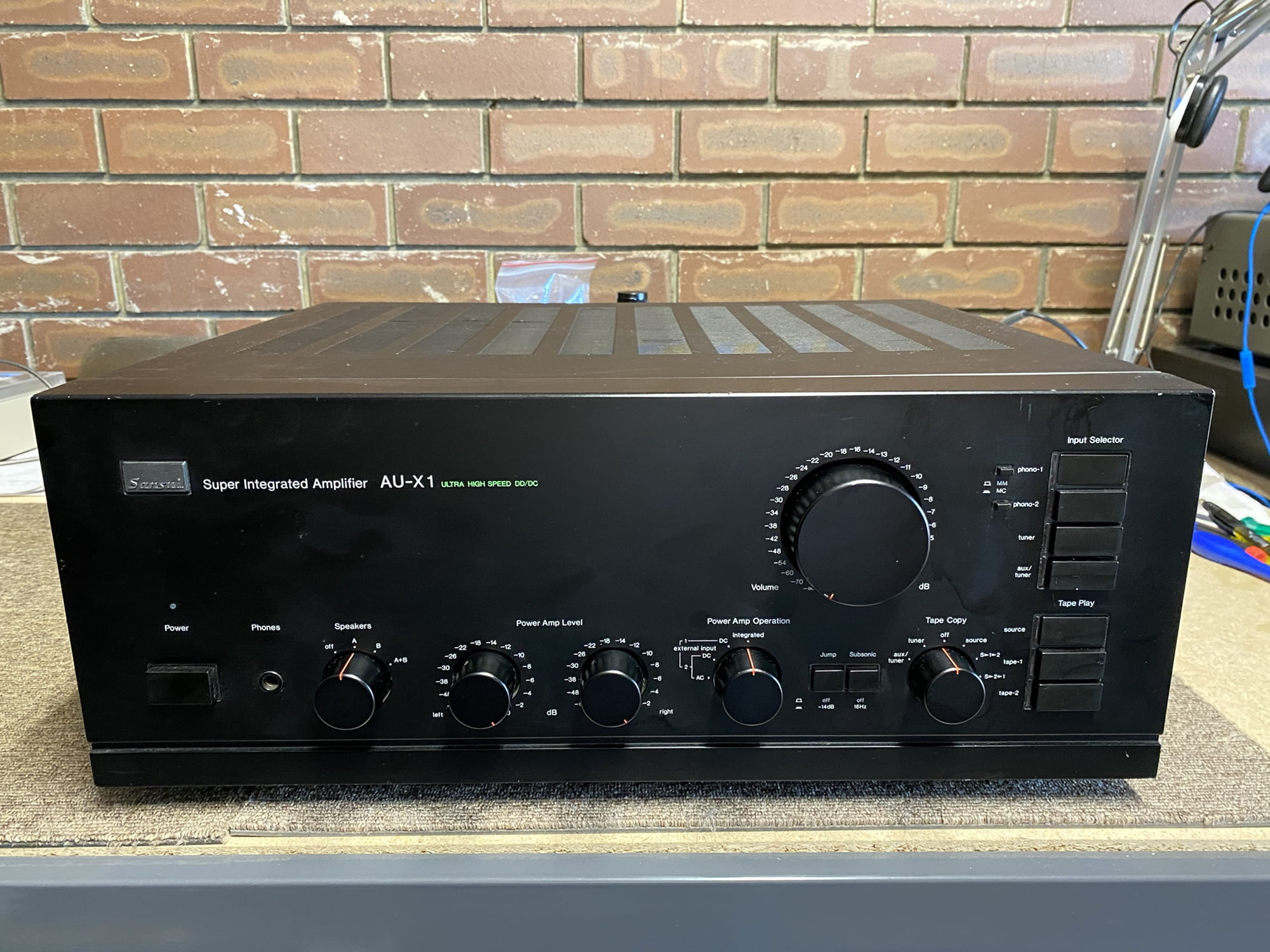
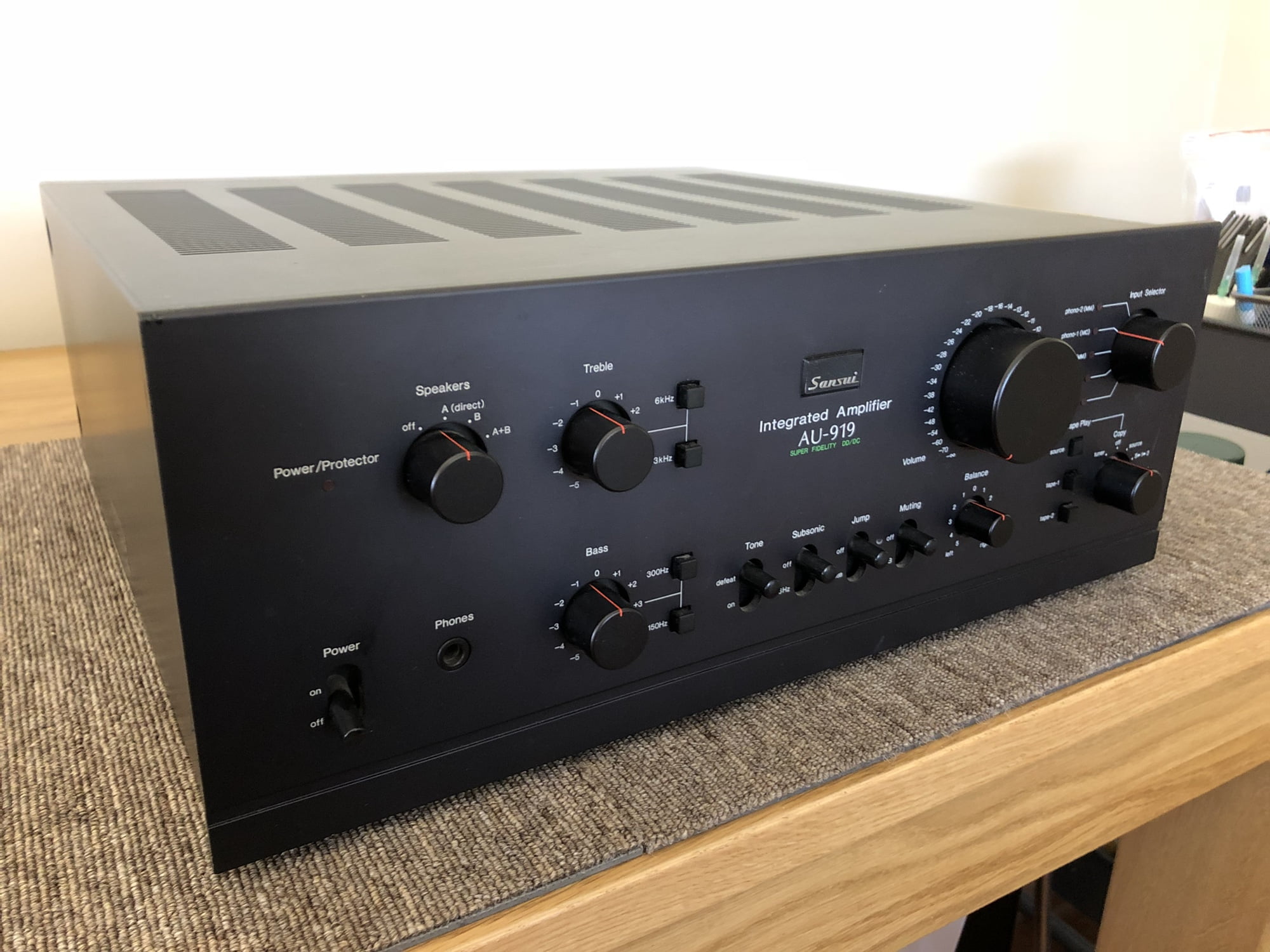
Sansui set the bar high with the AU-919 in terms of build quality, features and performance. It’s up there with models like the Accuphase E-202 and E-303 in many respects and other great integrated amplifiers like the Technics SU-V8, Sony TA-FA777, Kenwood KA-907 and a select few others.
By the way, check out the video overview I made of this stunning Sansui AU-919:
Sansui AU-919 Specifications
Courtesy HiFi Engine
Power output: 100 watts per channel into 8Ω (stereo)
Frequency response: 20Hz to 20kHz
Total harmonic distortion: 0.008%
Slew rate: 200v/uS – seriously, this is insane!
Damping factor: 100
Input sensitivity: 0.1mV (MC), 2.5mV (MM), 150mV (line)
Signal-to-noise ratio: 74dB (MC), 90dB (MM), 100dB (line)
Channel separation: 75dB (MM), 70dB (MC), 80dB (line)
Output: 150mV (line), 1V (Pre out)
Speaker load impedance: 8Ω (minimum)
Dimensions: 430 x 168 x 428mm
Weight: 21.4kg
Year: 1978 – 1981
Design
Sansui incorporated a bunch of buzzwords into the marketing for this model and others in the series. These include ‘Straight DC Stereo Amplifier‘, ‘Exclusive DD/DC Power/Phono Amps‘. Let’s discuss these in turn.
DC stands for direct-coupled and direct current, with both terms applicable here. The AU-919 amplifies everything from DC – direct current – with a frequency of 0 Hz, through to 500 kHz. This is achieved with a design using very fast transistors and no capacitors in the signal path.
Circuits like this are also referred to as being directly coupled – DC. Servo circuits keep DC offset voltages to a minimum. Capacitors would normally block them but remember there are no capacitors in the signal path here.
Capacitors in the signal path always degrade sound quality, with no exceptions. Having no capacitors in the signal path is a great thing but servos are needed to remove any DC voltages and each one needs adjustment. Direct-coupled circuits are therefore always more complex than capacitor-coupled ones.
The high speed and wide bandwidth of this amplifier give it a slightly unjustified reputation for unreliability. Yes, they can blow up, but it’s generally because people drive them with crappy gear or fiddle with them.
These circuits have such a wide bandwidth that they will amplify radio frequencies, given the chance. Use unshielded or badly made cables near a radio station for example and you might just see a puff of smoke from your 919 as it oscillates. Not entirely the amplifier’s fault, though the average user will assume it is.
The AU-919 has five power supplies. One, using an El-core transformer and constant voltage circuit, supplies the class-A preamp. Two others, using windings on the same El-core transformer, serve the class-A left and right pre-drivers.
The fourth and fifth use the big toroidal power transformer with separate windings feeding current to the driver and output devices. Four 15,000 uF oval-shaped capacitors provide the power reserve and that’s a lot for a 100 Watt stereo amp.
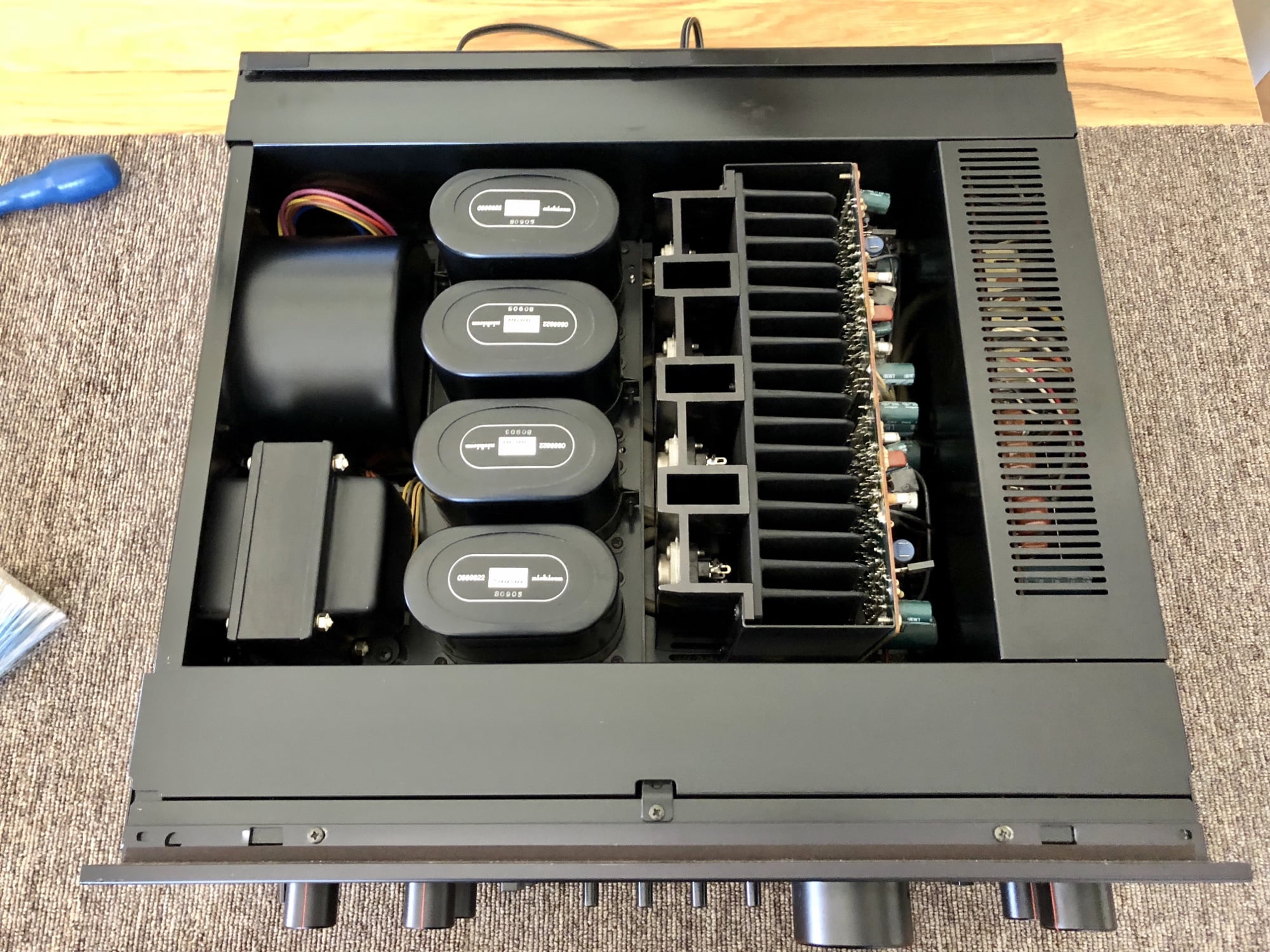
Marketing
Sansui certainly felt proud of their achievements in the AU-919 circuits when they wrote this:
The Diamond Differential DC circuit in the power amp and phono equalizer offers one of the widest frequency ranges ever achieved in audio – extending from zero Hz (DC) to an amazing supersonic high of 500,000Hz – and you have some of the reasons the AU-919 delivers the purest musical performance you’ve ever heard.
The AU-919 isn’t the cheapest integrated amp on the market, and at a modest 100 watts per channel, it isn’t the most powerful. But we’re convinced that for the serious audiophile who really cares about sound quality, and who is willing to make an investment in truly state-of-the-art equipment designed for nothing less than straight, uncolored, dynamic audio performance, the AU-919 deserves the most superlative of all – The Finest.
Sansui
Yep, it’s fair to say the Sanui marketing and design teams loved the AU-919 and why not, it would have cost them enough to design!
Like most Japanese amplifiers, the AU-919 has two sets of speaker terminals, tone controls, filters for turntables, loudness and tape controls. Most usefully, the phono preamp is superb by most standards, especially modern ones and caters for moving magnet and moving coil cartridges.
Layout
With the cover removed, we can see just how much time and effort Sansui engineers put into the design and layout of the AU-919.
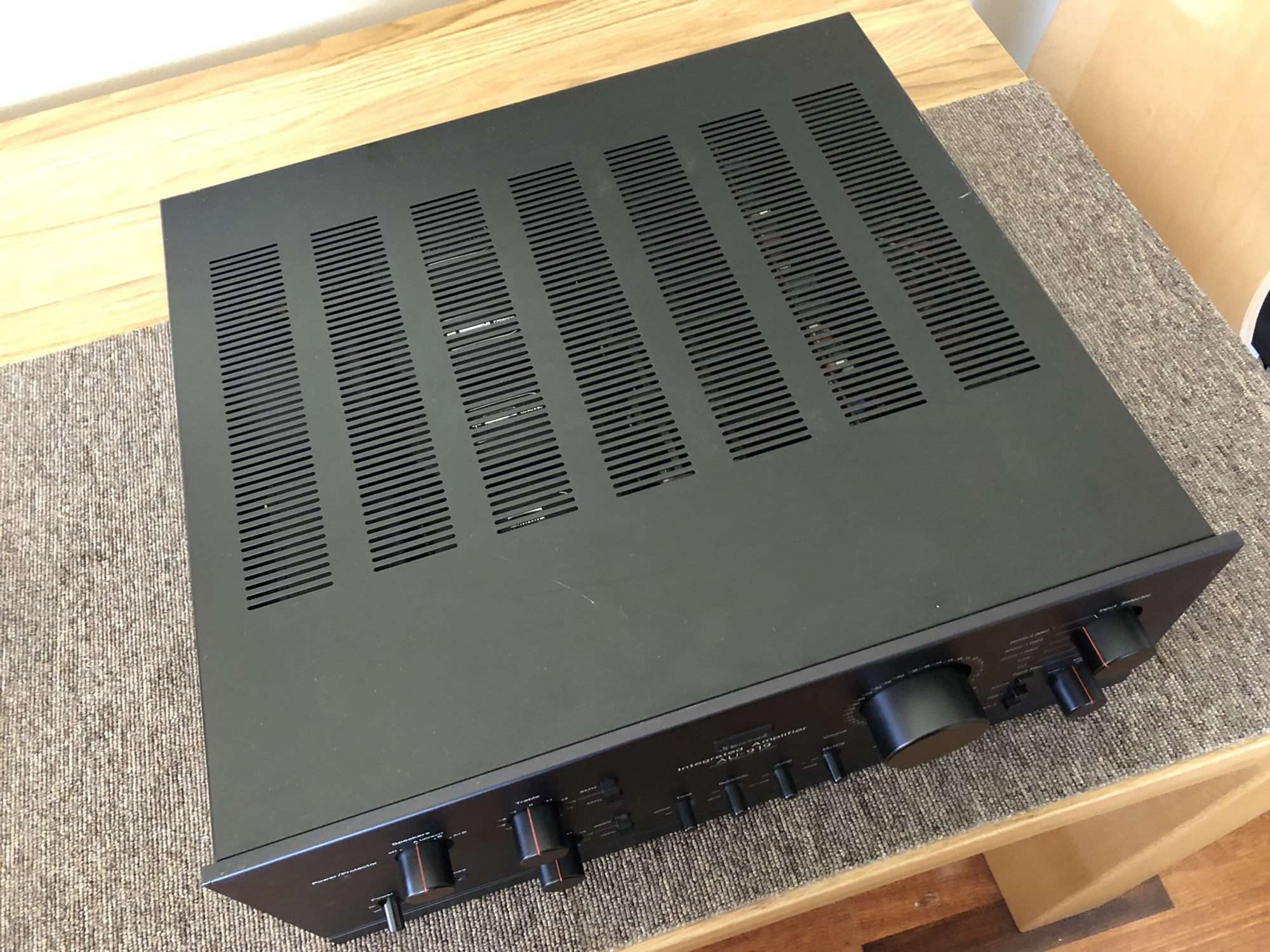
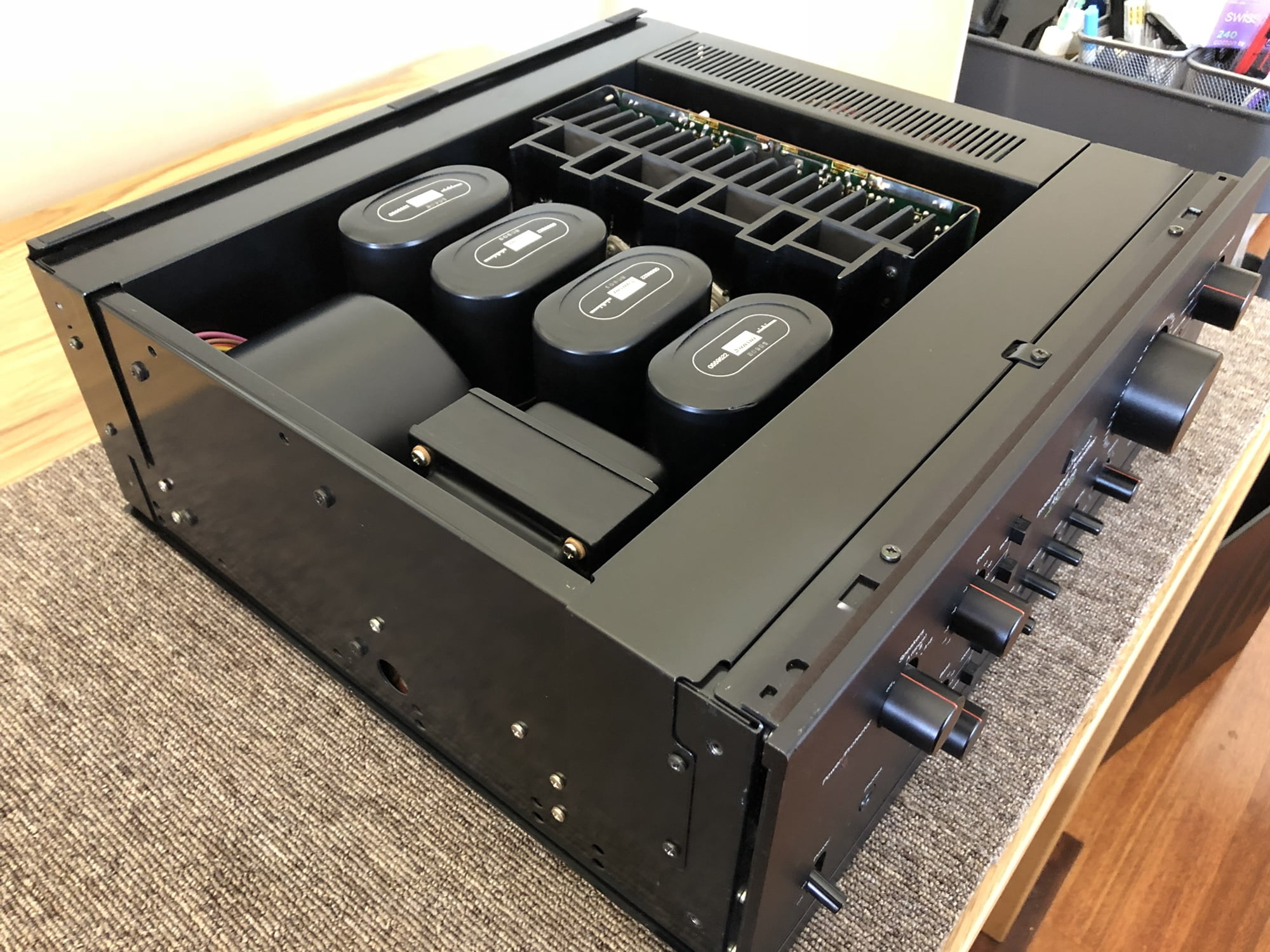
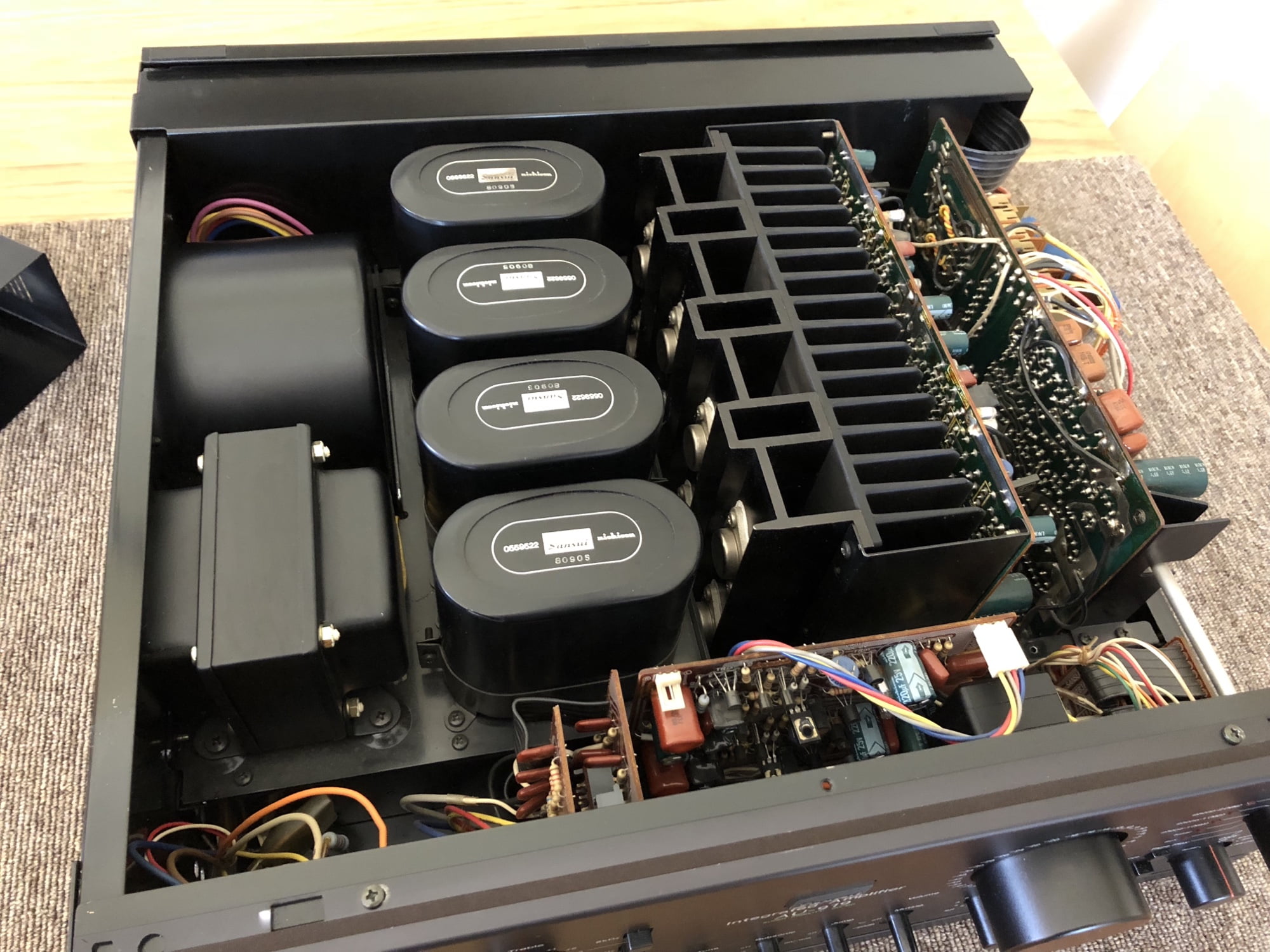
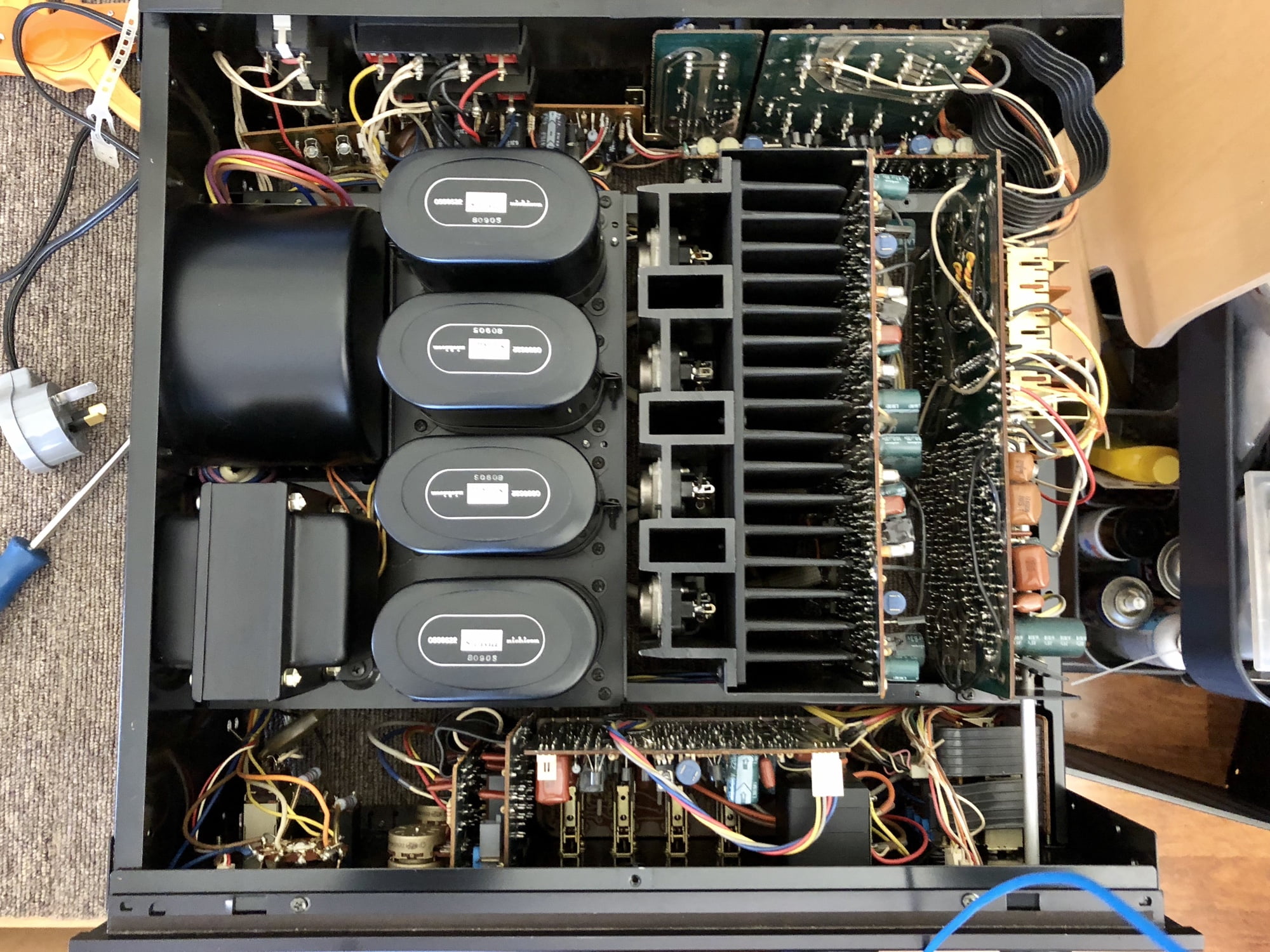
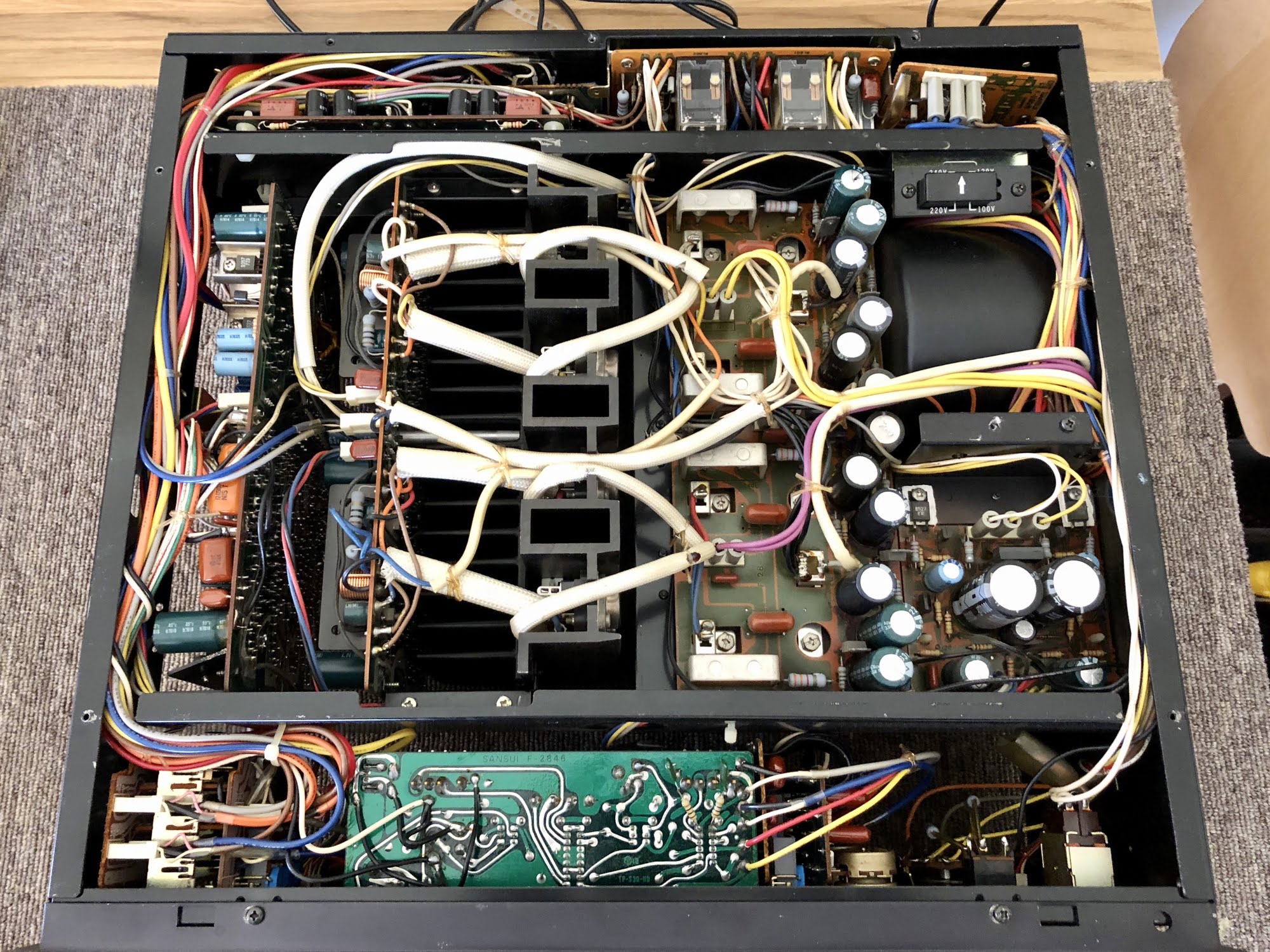
Service & Other Considerations
Properly servicing a Sansui AU-919 involves several hours, specialist equipment, chemicals and precision screwdriver twiddling. The screwdriver is for tweaking the – can you believe – 14 stages of trimming/adjustment! I’m not kidding and neither was Sansui.
Sansui designed the AU-919 with direct-coupled circuits end-to-end. That means DC servos at each stage and DC offset trimming everywhere, to prevent the amplifier from presenting DC voltages to the speakers. Can you believe there are six adjustments in the MC phono preamplifier alone? This is more than just about any amplifier I’ve ever seen, but thankfully, six became just two in the later revised AU-919 phono stage.
Some capacitors in the AU-919, AU-X1 and others don’t age well and can take out the output devices when they fail. Modern replacements for the caps and output devices are available but know that they will change the sound of the amplifier.
Switches and controls always need service and this doesn’t mean just spraying a cheap contact cleaner at them. I’ve developed a deep-cleaning regimen involving chassis and module washing and ultrasonic cleaning, which allows me to clean away decades of accumulated grease and grime from switches, rotary controls, boards and chassis parts.
I follow that up with a multi-step treatment process for switches and pots, and really bad parts just have to be opened and mechanically cleaned. The power switch in the most recent AU-919 I serviced was seized solid and needed some time and persuasion, to fix.
Then of course there are dry joints, relay problems, and ‘black flag’ film caps, about which much has been written, much of it alarmist and not correct. These and other snippets are then amplified by people not working on these things every day. Then there’s the infamous corrosive polychloroprene glue which is a problem, and various other things to look out for, the worst of which is often poor previous work.
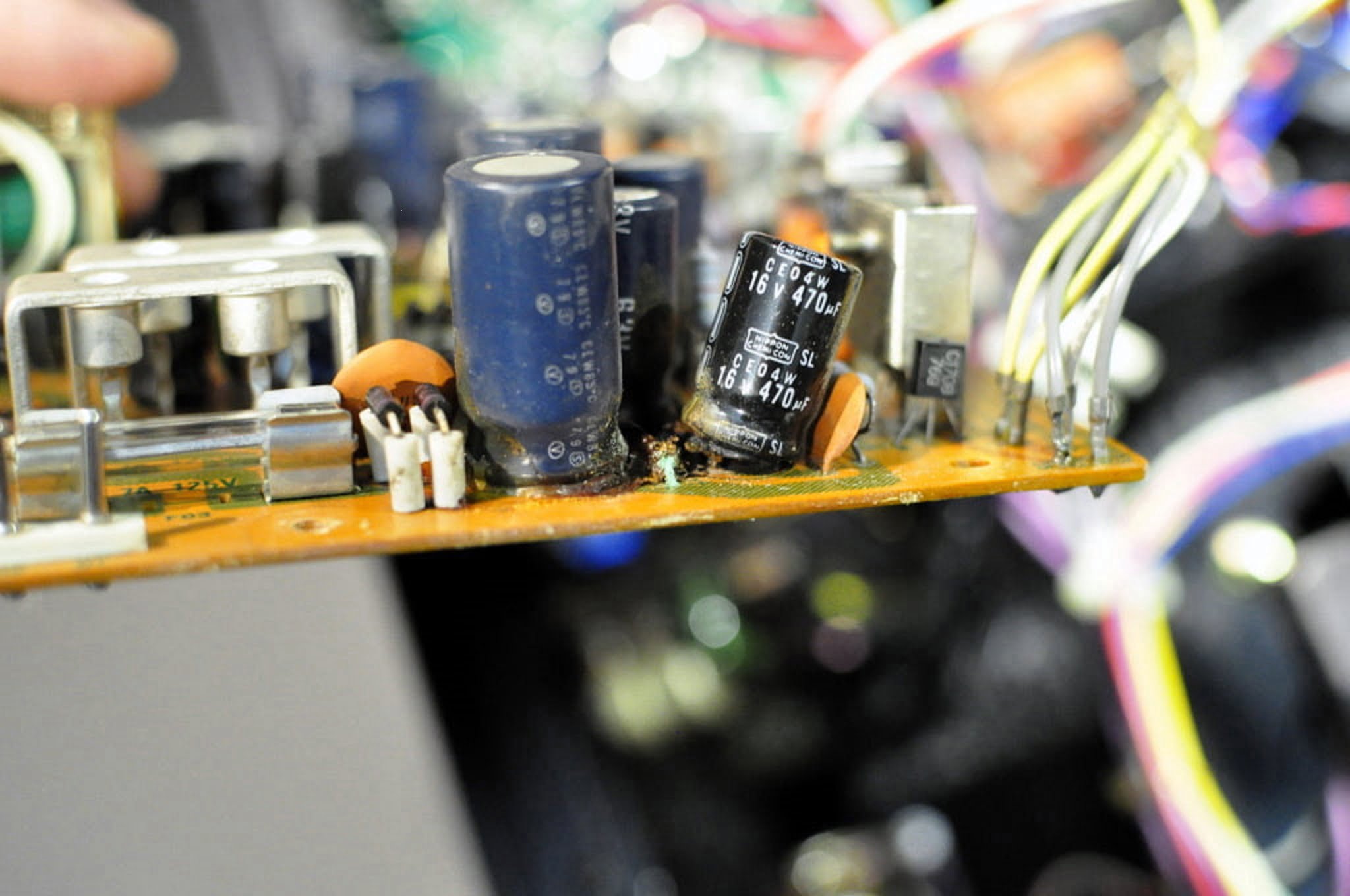
On the topic of polychloroprene glue and its being ‘benign’, this compound eats through the legs of components given the right set of conditions and the damage it causes must be rectified.
Caution
If you value good advice, let me offer a little, from the perspective of having worked on thousands of pieces of classic hi-fi equipment like this AU-919. In all seriousness, this isn’t an amplifier to fiddle with after a couple of beers, with a cheap multimeter, forum-fueled bravado and crossed fingers. No amplifier is, but especially not one like this.
There’s a time and a place for fiddling. Fiddle with your garden sprinklers, your bicycle maybe, but don’t fiddle with electronic adjustments in a circuit you don’t understand. Fiddling with things like this is not sensible and can be very dangerous. The smallest slip, piece of bad advice or wrong decision can kill an amplifier like this, or YOU, so just be careful.
Working on your equipment can be very rewarding and lots of fun, but keep in mind that reading a couple of articles doesn’t make you an expert. If you have the skill, tools, parts and access to informed technical assistance rather than opinion if you need it, by all means, have a go, but be mindful of the risks. If you are unsure or if this isn’t your thing, take it to a specialist and have the work done properly, and safely.
Having technical work done properly can be expensive. It’s skilled work requiring experience, training, costly tools, parts, etc. It’s no different than taking a mechanical wristwatch or car to be serviced. It has to cost something and the more challenging and specialised the work, the more it will cost. Still, a specialist will likely complete the work in a lot less time, do it better and attend to many other things that the home repairer isn’t even aware of.
Damaging or destroying your amplifier is by far the most costly option, so be wary of false economy. Check out what happened to this stunning Gryphon DM-100 for example. That was done to ‘save money’. It destroyed the amplifier. The replacement cost is upwards of $50,000.
But Mike, I want cheap, I don’t want to spend any money.
I don’t cut corners, I don’t support a cheap approach and it certainly doesn’t align with my business ethos which broadly involves doing things properly. Too many times I’ve what happens when people want stuff done cheaply.
Forums
Whilst there are some excellent online sources of information, I’ve found most to be more noisy than useful. Remember though that I have a different perspective. For me, nothing comes down to chance. Most owners do more harm than good when tackling complex electronic equipment, but I know this from years of experience, I see and fix the effects every day.
There is just such a vast preponderance of opinions, incorrect technical info, guesswork based on not ever seeing the equipment in question and regurgitated “I’ve heard that XYZ should be changed…” statements that it makes no sense to use such sources. People get annoyed about my thoughts on this yet I’ve seen more damage caused to hi-fi gear because of forums and DIY repair attempts than any other cause.
Half the bad repairers whose work I regularly come across get their advice from forums. Check out this failed repair on an AU-317 for example. A shotgun repair attempt that fixed absolutely nothing, cost the previous owner hundreds of dollars and the amplifier. A complete waste of time and money. I fixed the amplifier in a few minutes with the correct technical approach.
Whatever your stance, know that I’m not interested in debates about what someone heard someone say, read, or repeat via Chinese whispers, which was likely never correct in the first place. It’s all just speculation until someone with a clue puts their hands on a piece of equipment and even the most switched-on forum contributors agree with me on this point!
Kits & Shotgunning
People often ask me about selling kits, what kits I use etc. I don’t sell, use or recommend kits. The ‘replace everything’ approach, otherwise known as shotgunning, is often responsible for ruining gear and rarely fixes nor teaches people anything. People love the idea of kits and re-capping is often mistakenly viewed as a cure-all, yet no re-cap will resolve a noisy transistor or drifty differential pair.
From a technical perspective, there’s enormous merit in tracing and resolving faults in equipment. The counterpoint is that, for most, installing a kit is likely to do more harm than good and resolve little. Good parts will be thrown away because the operator has no way to test them. Others will be damaged as they are removed and installed, boards and pads will be damaged and there will likely be even more problems afterwards. I have seen this so often that I expect it now.
“Mike, are you saying overhauls are a waste of money?”
No, quite the opposite, overhauls, done well, are an absolute must for older equipment. I can’t personally assist most readers, but find the right person to look after one of these amplifiers for you, including taking care of any overhaul work that might be required.
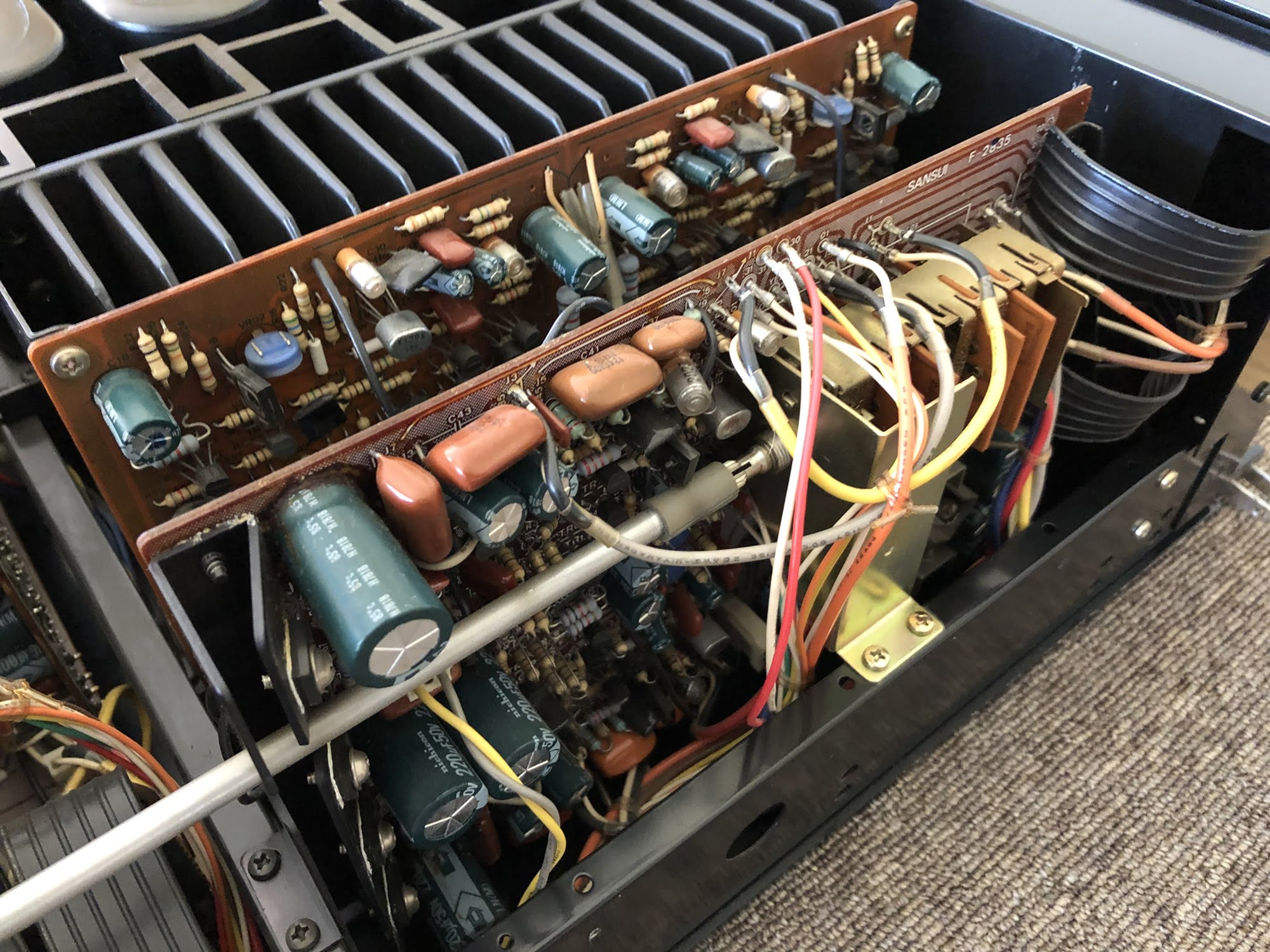
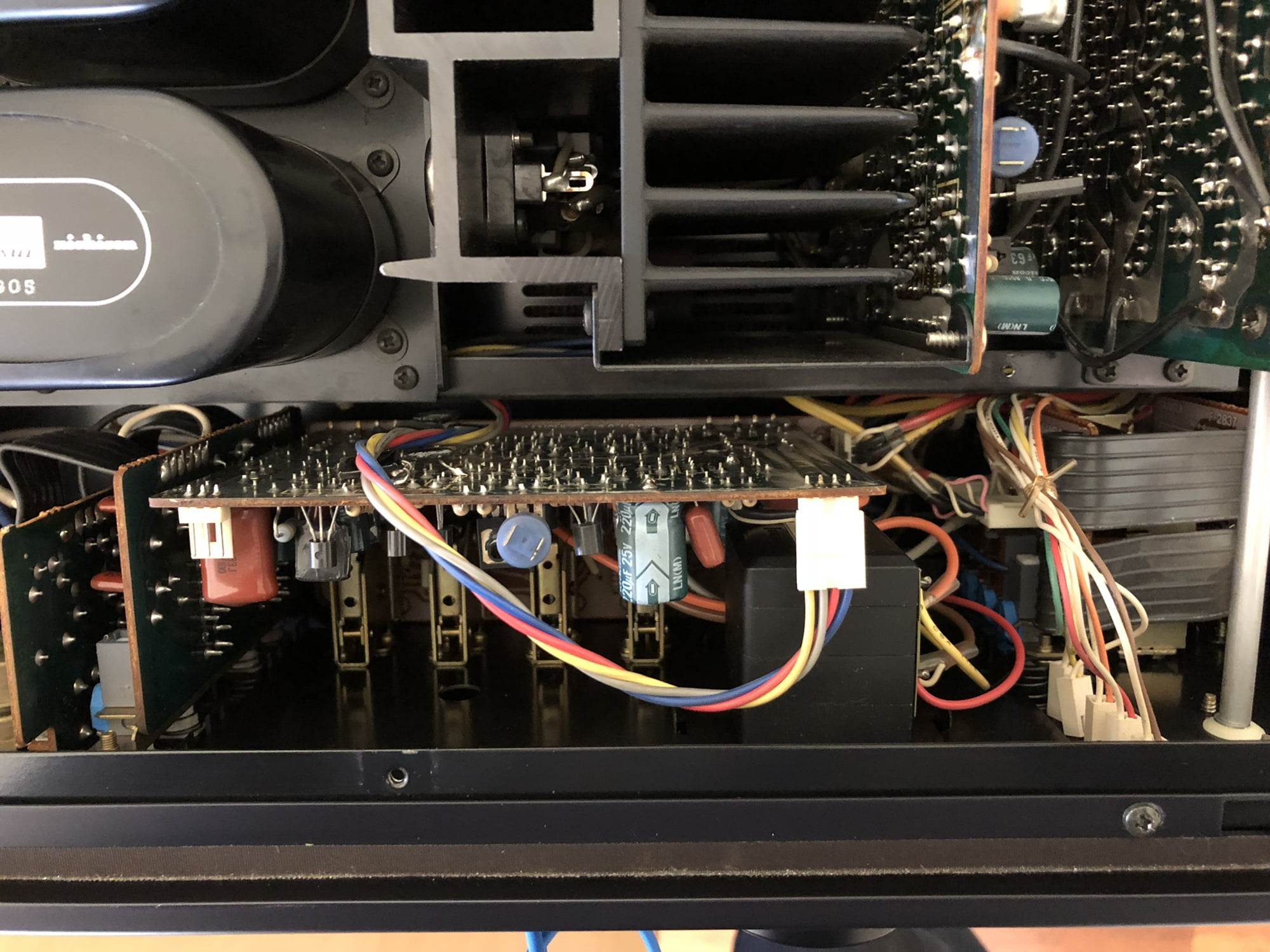
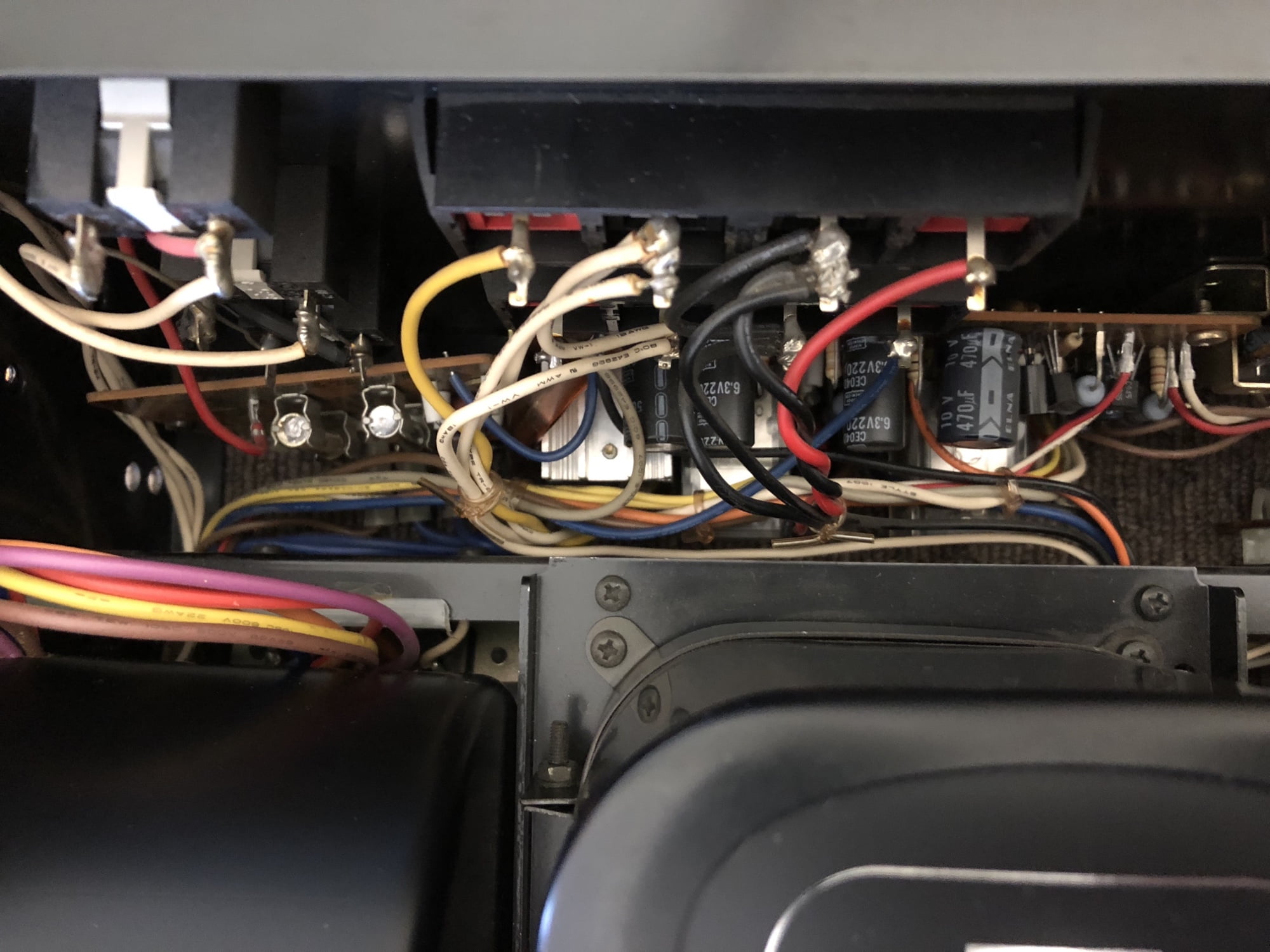
Performance
With this AU-919 freshly serviced, I was able to enjoy the sweet, sweet sound these amplifiers make. The AU-919 sounds powerful, clean, open and airy. These are fast amplifiers and fast amplifiers usually sound snappy and clean. Bass performance is strong, resolution of fine detail and nuance is excellent and 100 Watts per channel will drive most medium efficiency speakers without trouble.
Like many other Japanese amplifiers, the AU-919 won’t be entirely happy driving less sensitive, lower impedance loads though. Power-hungry, inefficient speakers are not best suited to the 919, but high-resolution monitors, bookshelves and floor standers will work very well in most cases.
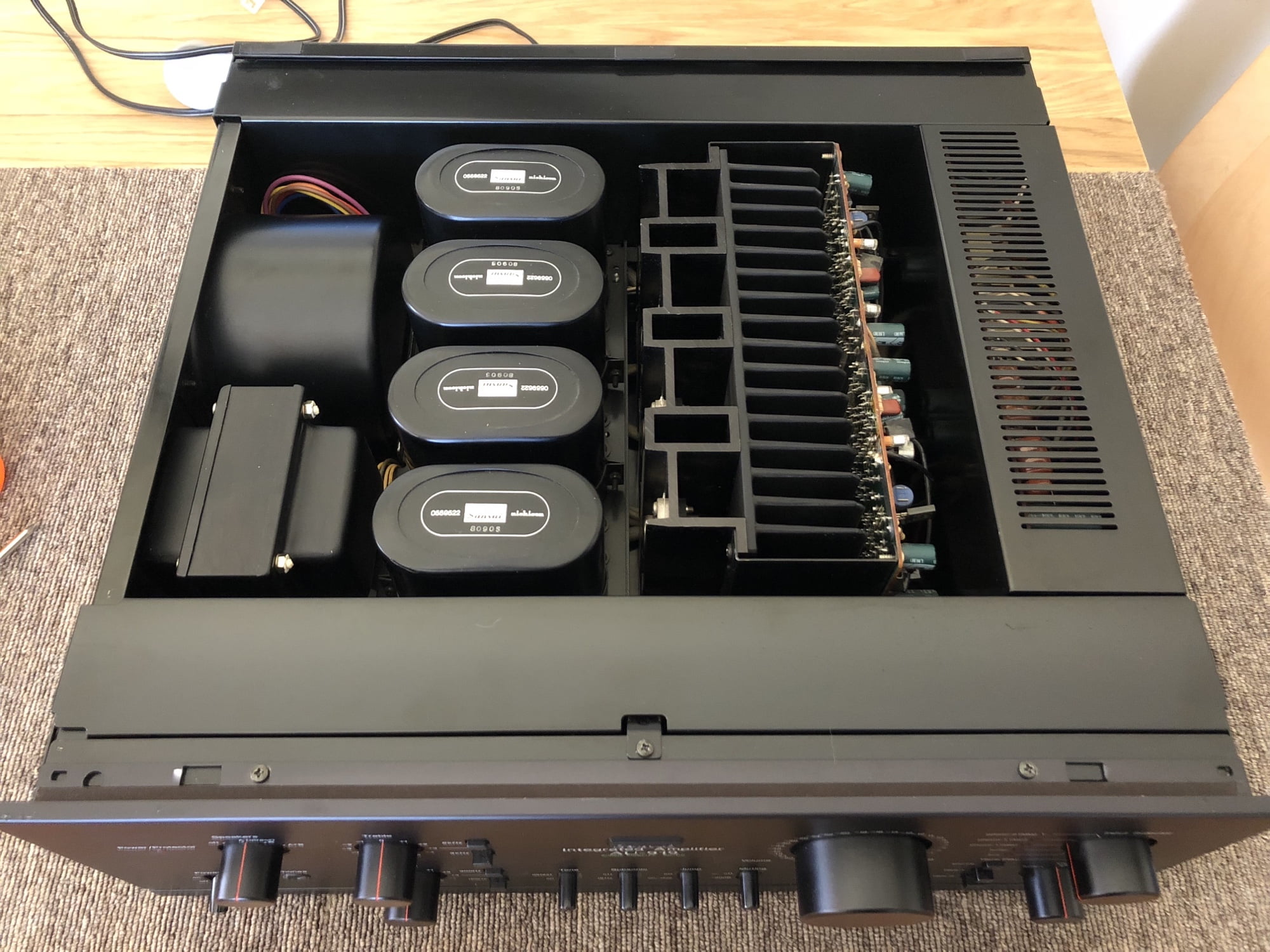
Purchasing Considerations
Watch out because many AU-919s have been worked on and messed with, often by owners who’ve fiddled and maybe not in any useful way. Output devices must be checked. Are they original? If not, are they appropriate, matched and graded parts? How about the driver transistors? Capacitors?
Many people replace the unobtainable oval filter capacitors in the power supply because they read that all electrolytic capacitors must be replaced. This is often unnecessary, especially with large filter capacitors, and detracts from originality and sometimes performance.
An expert inspection is essential, even if the amplifier seems to work OK.
Service is mandatory because all 14 adjustments will almost certainly need ah… adjusting. An overhaul is also a very sensible consideration at this age. This really must be done using premium parts, the right semiconductors where necessary and a conservative, technically informed approach. I cannot over-emphasise this.
Speaking of semiconductors, consideration must also be given to weird diode packages, blag flag capacitors, hard-to-find matched FETs (like the six grades in the MC phono preamp alone) and other unobtainable transistors that may require modern replacements.
Bang per Buck
Prices for AU-919s vary quite a bit. These are very desirable amplifiers so you’ll pay a pretty penny for a good one, often over $2K AUD. They are highly collectible and appreciating as people realise that even $9000 for a Yamaha AS-3000 doesn’t get you the level of engineering, matched FETs, phono preamp quality, two transformers etc that an AU-919 offers.
Sure, the AS-3000 is pretty, but $9K buys a lot of premium, vintage hi-fi gear doesn’t it? The AS-3000 weighs about the same as the 919, has only one transformer, definitely doesn’t have the same high-speed circuitry and unhelpfully, Yamaha doesn’t provide a proper 8 Ohms RMS power output figure. I wonder why not..?
Seriously, the AS-3000 is lovely, but at $9000 AUD, they’ve gotta be dreaming. This is why I keep telling anyone who’ll listen that vintage hi-fi is where the real value lies. Gear like this sounds at least as good and is way cheaper, for what you get. Once you form this understanding, you’ll find it very difficult to drop big money on modern high-end gear.
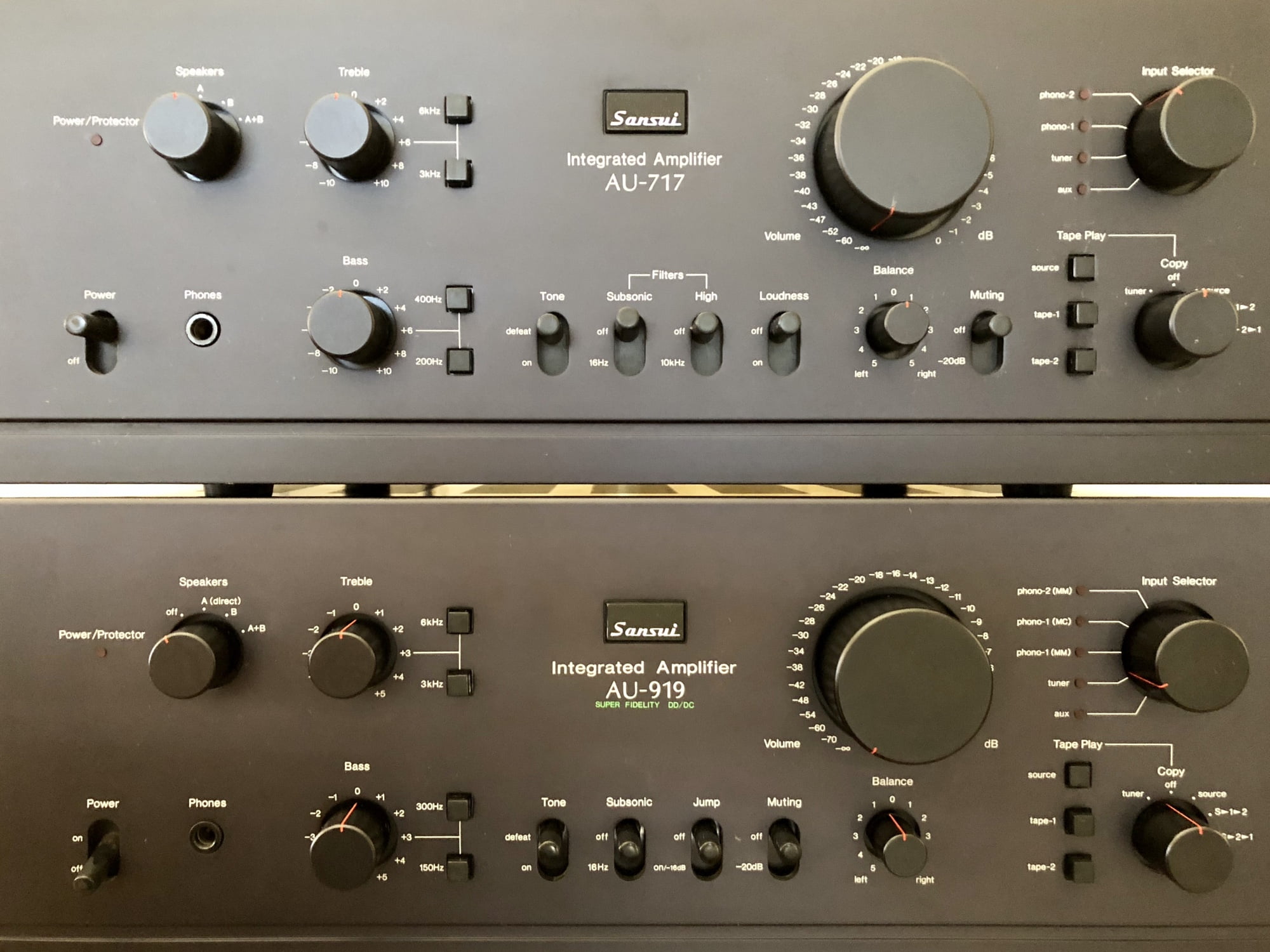
Bottom Line
So with all this in mind, if you can find a Sansui AU-919 for the right price, have access to a technician who can inspect/service/overhaul it for you and don’t mind the almost certain need to spend a little money, GO FOR IT! These are stunning amplifiers, definitely one of the greats.
On the point of maintenance, deciding on whether to have your amplifier overhauled for example should be relatively simple. If it’s not or if you are worried about the idea of having to invest some money into a piece like this after 40 years, this probably isn’t the right amplifier for you.
As always, thanks for visiting and I hope you found this article useful. If you own an AU-919 and would like me to carefully go over everything for you here in our Perth workshop, get in touch.
Discover more from LiQUiD AUDiO
Subscribe to get the latest posts sent to your email.

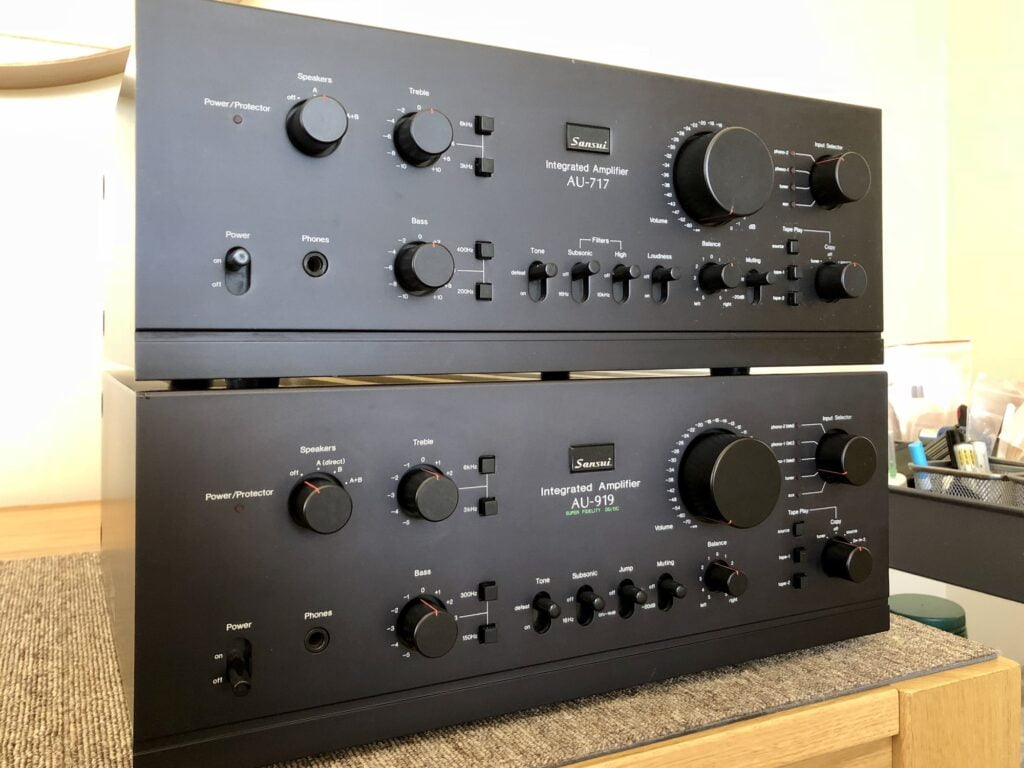
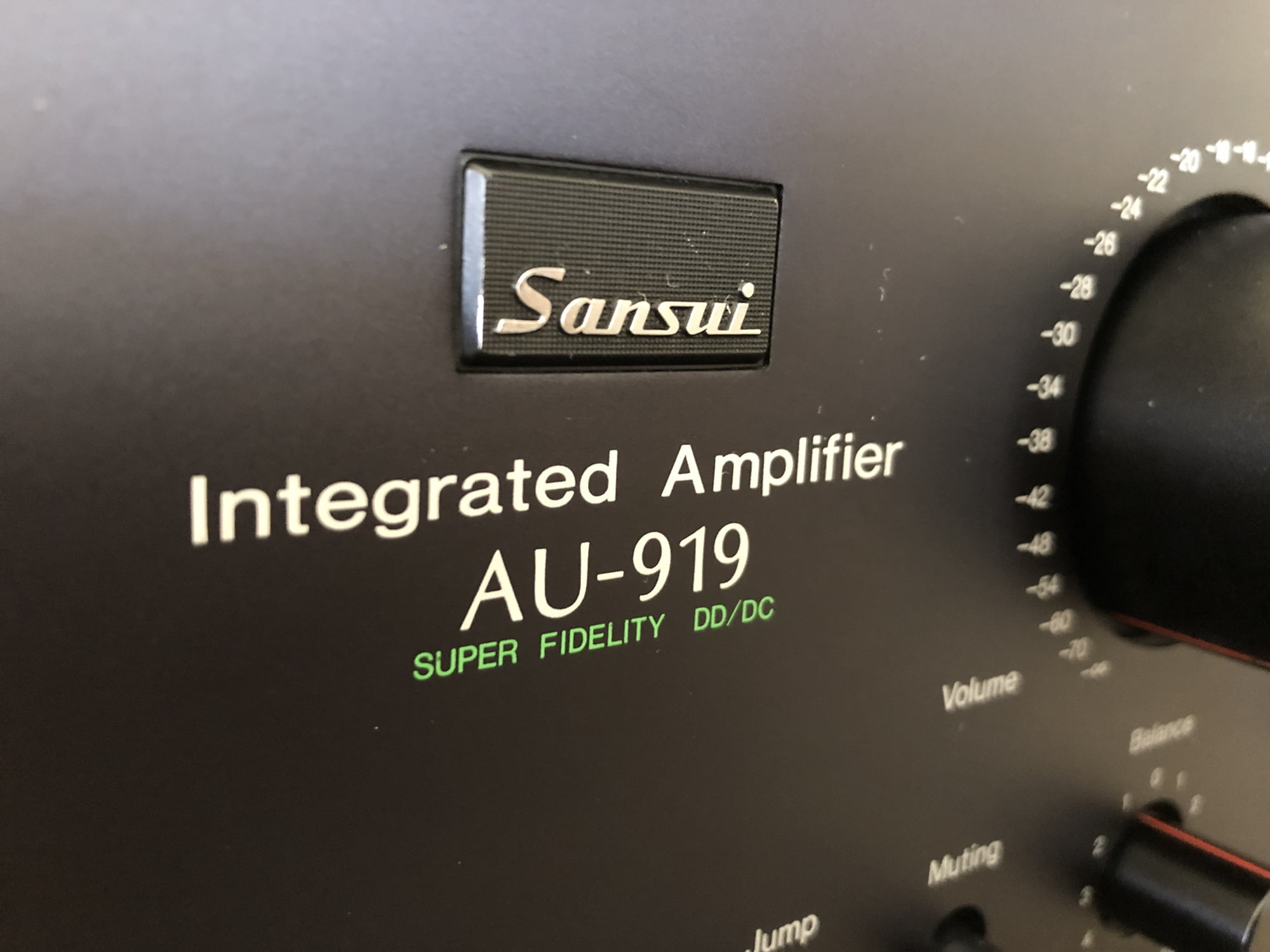
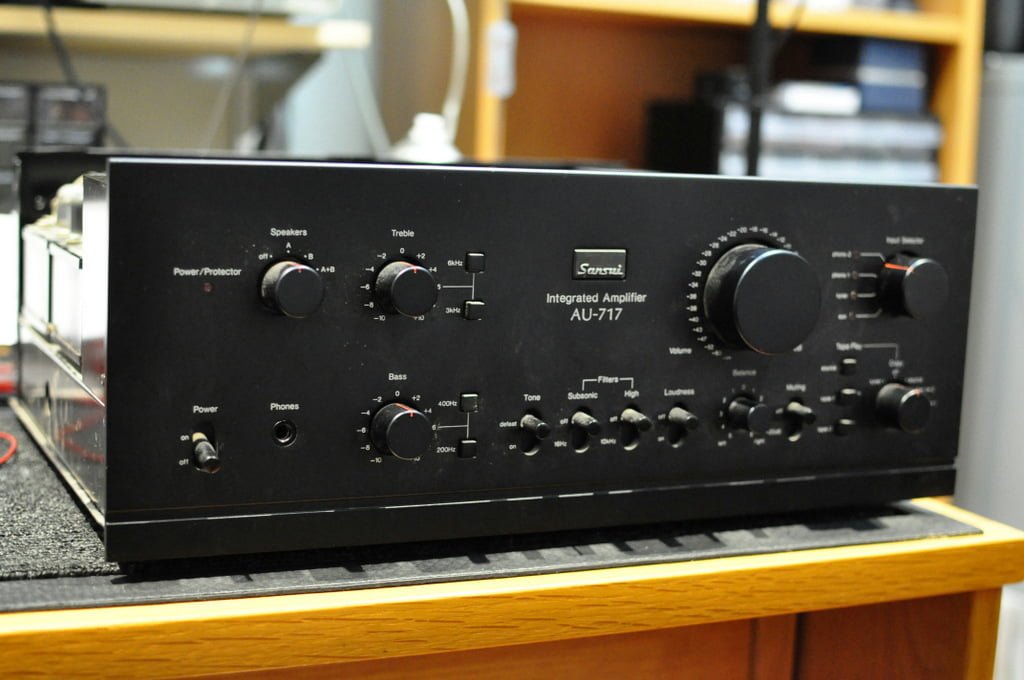
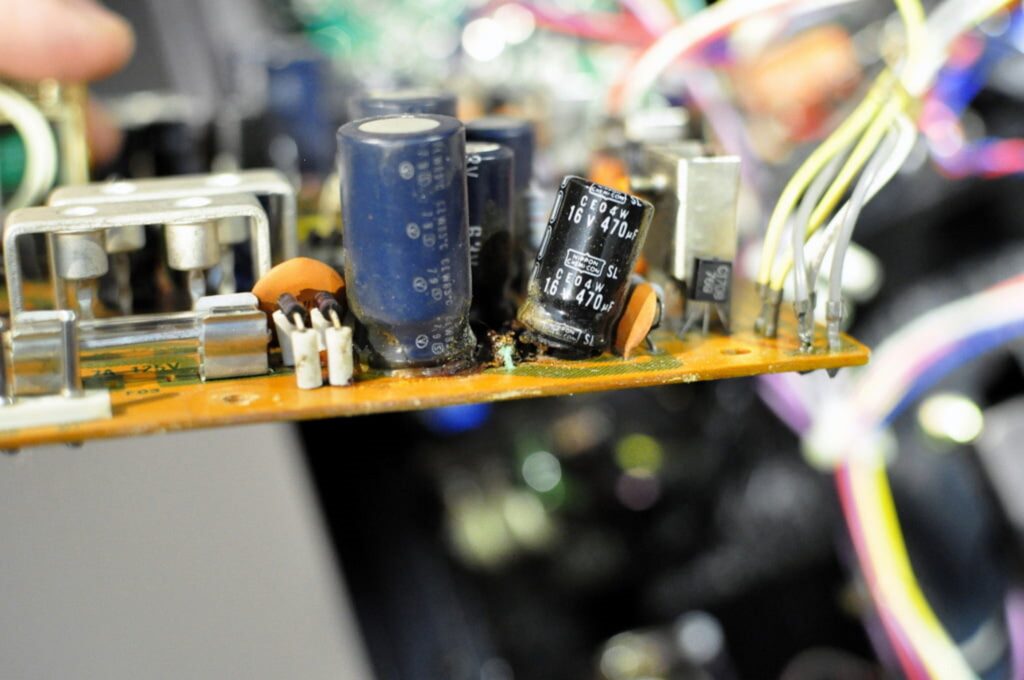
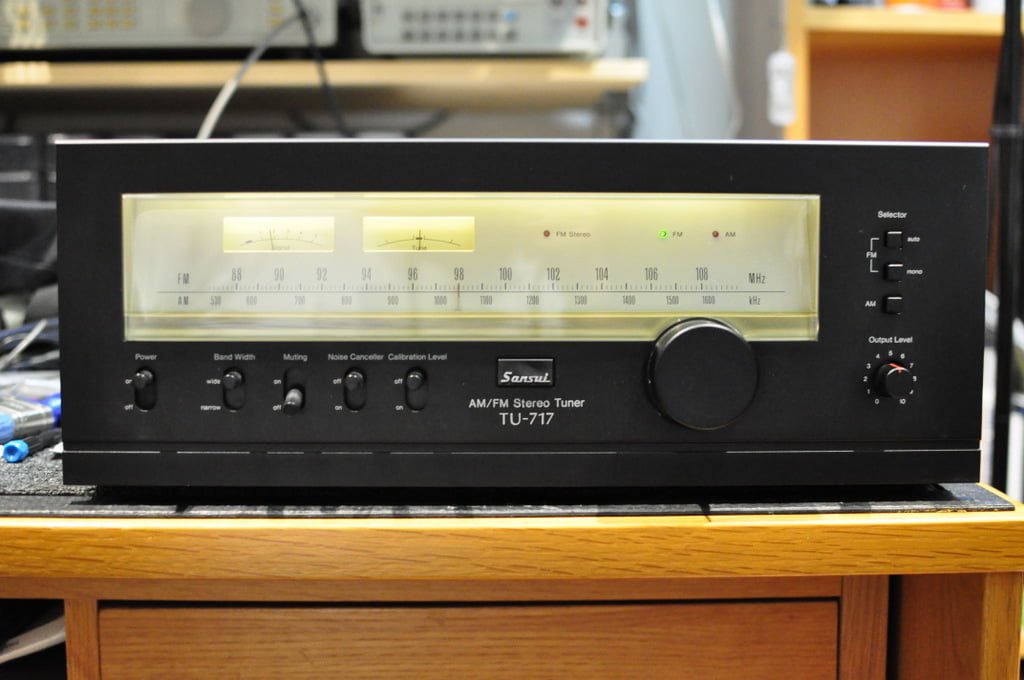
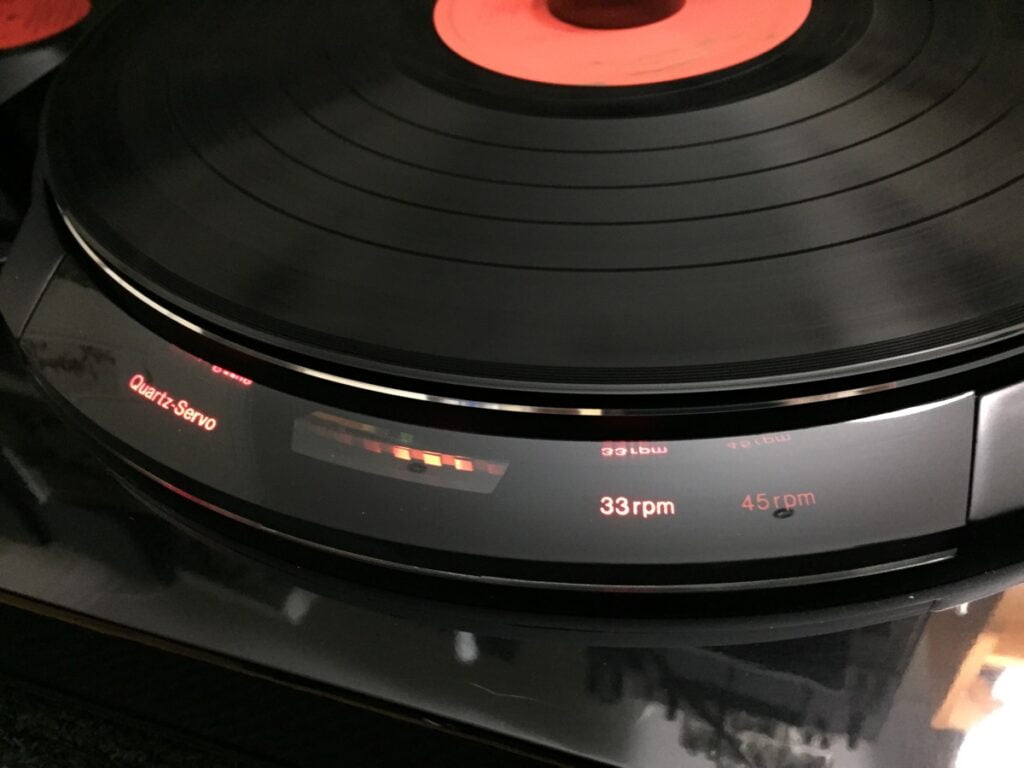
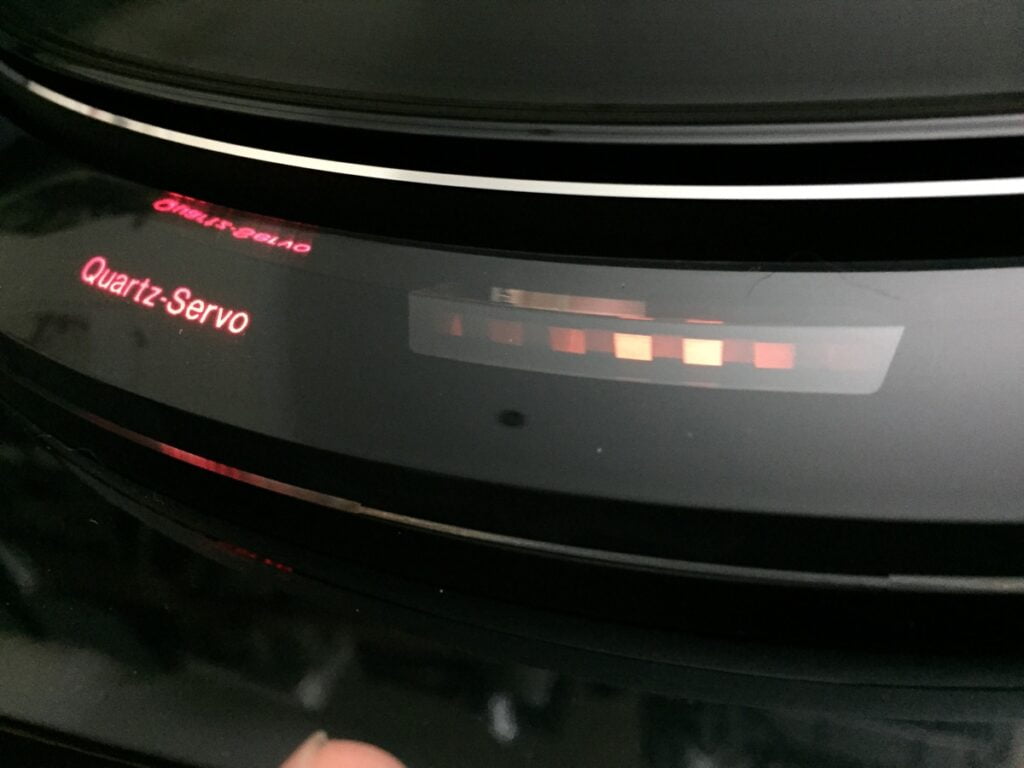
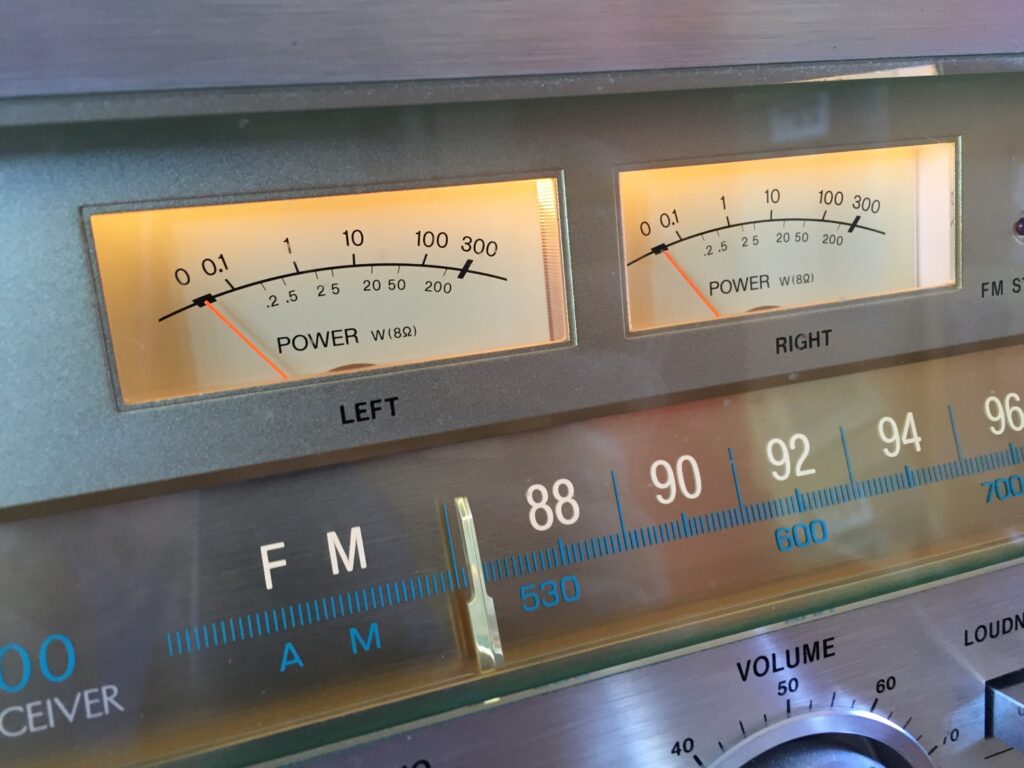
Awesome review. I have one of these here in the UK and it is quite something!
Thanks Ross and great to know you love your 919! I have another 919 here for service as we speak and an AU-X1..!
Cool. Apologies, only just saw your reply! Did you have chance to record a video on the AU-X1? Big fan of your channel!
Thanks Ross, not yet as I haven’t worked on this one yet but stay tuned!
Will do
Enjoy your work and articles.
I bought my Sansui BA-F1/CA-F1 new in 1980, and its been my only setup for 40 years. S/N 22020107 & 21002016. Always been paired with Klipsch LaScala’s of the same vintage. All original and never modified. I can attest to the sound, build quality and dependability. The combination IMHO outstanding. Only had to spray some contact cleaner on the preamp potts once. Did have to service my turntable a Pioneer PL-L1000 once though (still not right) Reel to reel is Revox B77 that needs some work but all in all still find the old stuff hard to beat.
Hi Todd, thanks for commenting and I couldn’t agree more, this classic vintage gear brings so much longevity and enjoyment. I have a PL-1000 here for service now, lovely turntable.
Salut je possède un sansui au 919 qui me fait tourner des pioneer s1010 magnifique magnifique le 919 et un monstre c’est très dur de trouver un rival
Hi Franck, I agree, the AU-919 is almost without peer in its class and category. A truly superb amplifier!
I have an Onkyo A-7090 amp and the volume control is intermitent at best. I have enjoyed the sound using the matching tuner, California Audio Labs CD and Audio Technica PS10 speakers. Is this worth reparing? What modern amp will give me the same performance?
Definitely, lovely old amps like this deserve to be serviced, repaired where needed and overhauled. Yours likely just needs a really good service. An overhaul on the other hand will breathe new life into the old girl, assuming the right work is done. You’d need to spend several thousand on a new integrated to get something equivalent and it won’t have the vintage appeal or sound.
Thanks, The shop that is repairing my amp is the one I bought it from and they are good so I am having whtever t needs done.
That’s a sensible approach.
Fabulous amp and fabulous review – interesting, helpful, educational, well-written, excellent pictures – as always with Mike!
Thanks Rob, very kind of you and glad you enjoyed the article!
Hi Mike
Your review of AU 919 is like touching the holy grail of any audio review! Super helpful and detailed! I have a question that only you may answer. I have option of buying either AU 919 or AU 9900 from a very trusted source in perfect working condition. may need a little servicing though of a few capacitors maybe! But in the present condition also working very well.
Which one of the 2 do u recommend more? I listen to vinyl records mostly and also CDs. I currently have Tannoy Stirling GR speakers but in future may even add another pair. So considering this as well as which one is a better pre-amp, which one would you recommend?
Also, i currently use a ROTEL 1210A vintage amp and find its inbuilt phono much better sounding than a Schiit Mani phono pre for example. Is that the same case with even Sansui amps?
Look forward to your replies.
Sumit
Hi Sumit, thanks for your kind words and I’m glad you’ve found this useful. Both amps are great, but I prefer the 919. Your observations about cheap modern phono preamps compared with the often excellent phono preamps built into equipment like the 919 are spot on. You’d need to spend a considerable amount of money to improve on the phono preamp in a 919!
I am running an AU-717 matched to a pair of Polk Audio SDA 2B monitors and a Technics SL D3, Technics SL Q2 and a Pro Ject Debut Carbon. Multiple cartridges from Sumiko and Audio Technica as well as a Signet tk3a. Beautiful sounds!
Maybe it is a bit late, but I just bought a Sansui AU 819 – very close to 919.
Verry good working condition and visually.
If any of you have any thoughts about it, maybe you can share it.
Mihailp
Great work Mihail! Most of what I wrote in this article applies. She will of course need inspection and maintenance work at this age but this is to be expected. Treat her to a really good service from someone who really understands equipment like this and all should be well!
Thank you, Mike!
I will definitely sent it to service.
My pleasure, let me know if there is anything else I can assist with.
I really like you review Mike it is spot on. I give to my son AU 666 (great sweet sound amp) and bought restored AU 717 nice step up. Funny you mentioned Yamaha AS 3000. I have a chance to buy slightly used Yamaha AS 3000 for very good price. Do you think that it will be a significant upgrade from 717? I wondering if the Yamaha will have a better phone stage for MM then 717?
Thank you for your advice.
David
Hi David, glad you enjoyed the review and hopefully you’ve found or find other articles of interest here too! The 3000 is a nice amp but so is the 717. My advice is to compare the two and maybe a 919, you might be surprised. More detailed advice can be obtained by following the steps on my contact page. This helps to offset the time and effort needed to put articles like this together.
Great work and review! I recapped my 919 myself a few years ago with the help of some special people on AUDIOKARMA. ECHOWARS was the main person to advise me. Much info still on the karma about the 919.
Love the 919!
Thanks Greg and glad you enjoyed the article! Very good news about your 919, too. Sadly not all such stories turn out this way and many irreplaceable pieces have been damaged or destroyed by less skilled attempts and/or poor guidance, as opposed to the no doubt excellent help you received. Most owners should really never try something like this, but for those with the skills, the right tools and access to the (sometimes extensive) time and patience of an expert, it can be a very rewarding process. Well done!
Hi Mike, greetings from Canada! Great review and photos. Have you done a piece on the 1974 881-771 Sansuis? I have an 881 that I bought just recently after selling mine 3-4 years ago and am glad I did. What are your feelings on this recieved line. Thank you and best wishes.
A MacDonald
Hi Alexander, thanks for commenting and my apologies for the delayed reply, I’ve been away on holiday. I’ve worked on many of this series of receivers and really should a piece on one or more of them, along with the classic Sansui Eight which many class as one of the best receivers of all time. I promise I’ll do my best to get around to writing about at least one of these sometime soon!
Dear Mike, I was sorry to notice, that Sansui oval caps are really scum!
Please, watch:
https://www.youtube.com/watch?v=-bbZuzzeMyo
Shame on Sansui !
Hi Piotr, thanks for your comment and my apologies for missing it, it went to spam because of the link. I’m not sure why you feel these capacitors are “scum”, they are just two regular capacitors sealed inside an oval container, nothing very exciting technically or to be especially critical of in my opinion. Nevertheless, I like your video showing what’s inside. These oval capacitors can of course be replaced by regular parts, either re-using the oval case or not, depending on preference. As with capacitors in general, they are often replaced unnecessarily by folks lacking the ability/equipment/understanding to test them, unfortunately.
I just picked up an AU-719 from the original owner for next to nothing. Cleaned it up a bit and cautiously turned it on. Everything worked great with little to no scratchy pots or switches. I only ran it for about 15 minutes as I’d like to have it checked out and overhauled. How do you find a qualified restorer and what are the questions to ask to feel confident in their abilities?
Hi Shane, great work there and yes, it will need a good service and potentially an overhaul from someone who knows what they are doing and won’t ruin it. I get this type of question so often that I’ve written an FAQ about it: https://liquidaudio.com.au/faq/if-i-cant-bring-my-equipment-to-you-how-do-i-choose-a-good-local-repairer/. I don’t know where you are located but within Australia means you at least potentially have access to our services. Beyond Aus it gets harder, but look for the evidence I refer to in the FAQ including photos, articles and so on from people who’ve worked on a lot of these. I think most importantly, watch out for unrealistic claims and promises. Let me know if you have any other questions!
You gave very good information, thank you. I live in Turkey, I have a sansui 919 and I love it very much. I have a question for you. My transformer in the front gets very hot after 1 hour.
Hi Turgay, that doesn’t sound good, I suggest having it looked at by someone who’s worked on a few of these and has a good range of experience working on vintage amplifiers. As I often point out and speaking from experience, most owners shouldn’t delve into their equipment, especially not a piece like this, unless they have good electronics experience and knowledge. I know it’s tempting, but just be careful, I see the results all too often.
I know the Sansui BA-F1 is a power amp & not a Integrated amp. But you didn’t mention it as one of Sansui finest design’s.
Hi Richard, yes indeed, the BA-F1 is a beauty. One of my customers owns one that I restored for him a few years back. It’s a lovely amplifier, though it is a powwer amplifier and therefore needs a preamp like the matching CA-F1. That same customer also owns an AU-X1 which I restored for him last year and he definitely prefers that to his BA-F1. The AU-X1 is certainly one of the best integrated asmplifiers I’ve heard.
Yes Sir, using my fully restored BA-F1 with a fully restored CA-F1, Thanks Mike
Excellent article and even better advice!
Rich
Glad you enjoyed it Rich, amazing amplifiers, not everyone appreciates the truth on the topic of looking after them but sensible folks get it.